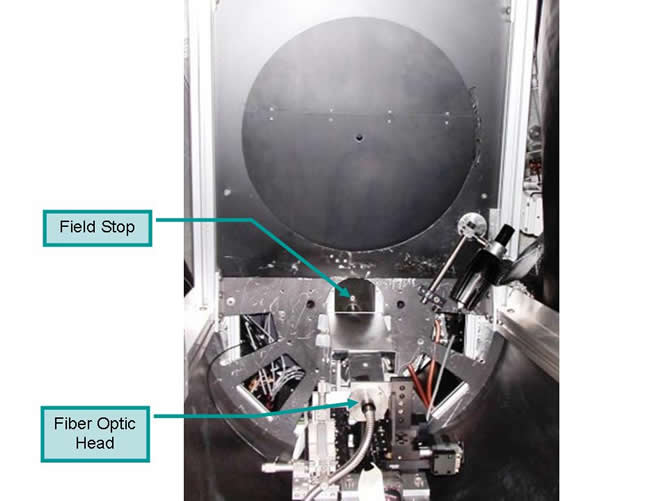Brief History
In order to solve some of the above mentioned solar coronal measurement challenges, Jeff Kuhn designed the Solar-C telescope in the early 1990's. Roy Coulter engineered the construction and then Haosheng Lin built the fiber optic spectropolarimetry imaging system.
Construction was started in October 1998 an first light was achieved in August 2001.
Team Members
- Jeff Kuhn
Astronomer
Ph D., Princeton, 1981
Associate Director Institute for Astronomy
Principal scientist and instrumentation specialist
- Haosheng Lin
Associate Astronomer
Ph.D., Michigan State University, 1992
Principal research scientist and spectropolarimetry specialist
- Roy Coulter
Engineer
Principal design and construction engineer
- E. John Messersmith
Software Engineer
BA Physics, University of Chicago, 1985
Principal control software design, implementation and maintenance
- J. D. Armstrong
Ph.D. University of Hawaii, 2004
Astrophysicist and principle adaptive optics engineer
Scientific Goals
Solar-C will provide more accurate coronal measurements in order to explain and better understand many solar phenomena including:
- sun spot formation, structure and dynamics
- Coronal Mass Ejections (CME) formation and acceleration
- transition region temperature inversion (Coronal Heating Problem)
- solar flares
- space weather and its effect on the terrestrial environment
In addition, Solar-C will act as a prototype off-axis telescope for ATST and enable us to more thoroughly understand how to overcome the technical and engineering challenges specific to this kind of design. In particular, we will be resolving issues of alignment, heat dissipation and guiding off of asymmetrical phenomena.
Telescope Design
The Solar-C telescope is an off-axis Gregorian system with a 0.45 m diameter primary mirror. The prime focus plate scale is 120 arc-sec/mm with a focal ratio of f/3.8. The system is diffraction-limited over an 18 arc-minute field at 1 micron. The secondary mirror is housed on top of a hexapod mechanism that allows more precise control over focus and alignment. At the Gregorian focus the final focal ratio is f/18 and the plate scale is 40 arc-sec/mm. In practice a 5 arc-minute field stop is used at the prime focus to limit down-stream heat loading and better match our current detectors at the Gregorian focus.
Ray tracing diagram showing incident light patch to Gregorian focus
System heat management is achieved though embedding copper tubing around the field stop and under the primary. For more information please refer to Heat Management in the System Hardware section.
Design Philosophy
The traditional approach to Gregorian reflecting telescope design is “on-axis” – the optical axis lies on the axis of symmetry of the optical components. This has kept design and fabrication simple. However, the secondary mirror and its support structure obstruct part of the optical path. This causes fringing and scattering. When observing in the infrared these obstructions also act as heat sources in the optical path. This is equivalent to putting a lit light bulb in the middle of a visible light telescope. An off-axis telescope removes the obstructions (and heat sources) from the optical path, allowing for cleaner images. Therefore, an off-axis telescope is the best design choice in order to achieve the necessary precision to observe and measure solar limb phenomena.
Many scientists believe it is impossible or too difficult to build and align large off-axis telescopes. Our experience with Solar-C has shown that this is not the case. The primary is not simply an off-axis parabaloid but rather a de-centered section of a larger symmetrical virtual parabolic mirror. Today's sophisticated manufacturing techniques allow this kind of mirror to be built with minimal aberrations. Alignment, while more challenging than with a symmetrical primary, is in fact both possible and practical.
For more information please click here.
Images
A light-hearted look at the construction of Solar-C.
Primary Mirror
Field Stop Cooling

Field Stop and Fiber Optic Detector Head

Solar-C from Above Looking West Southwest
